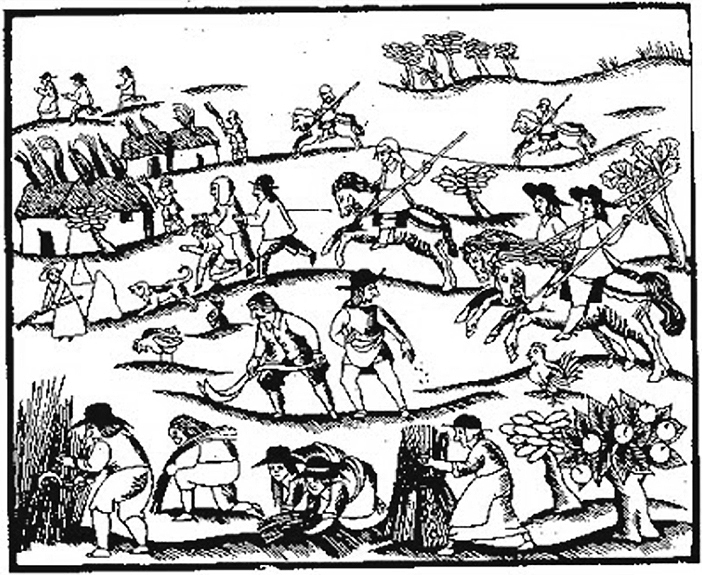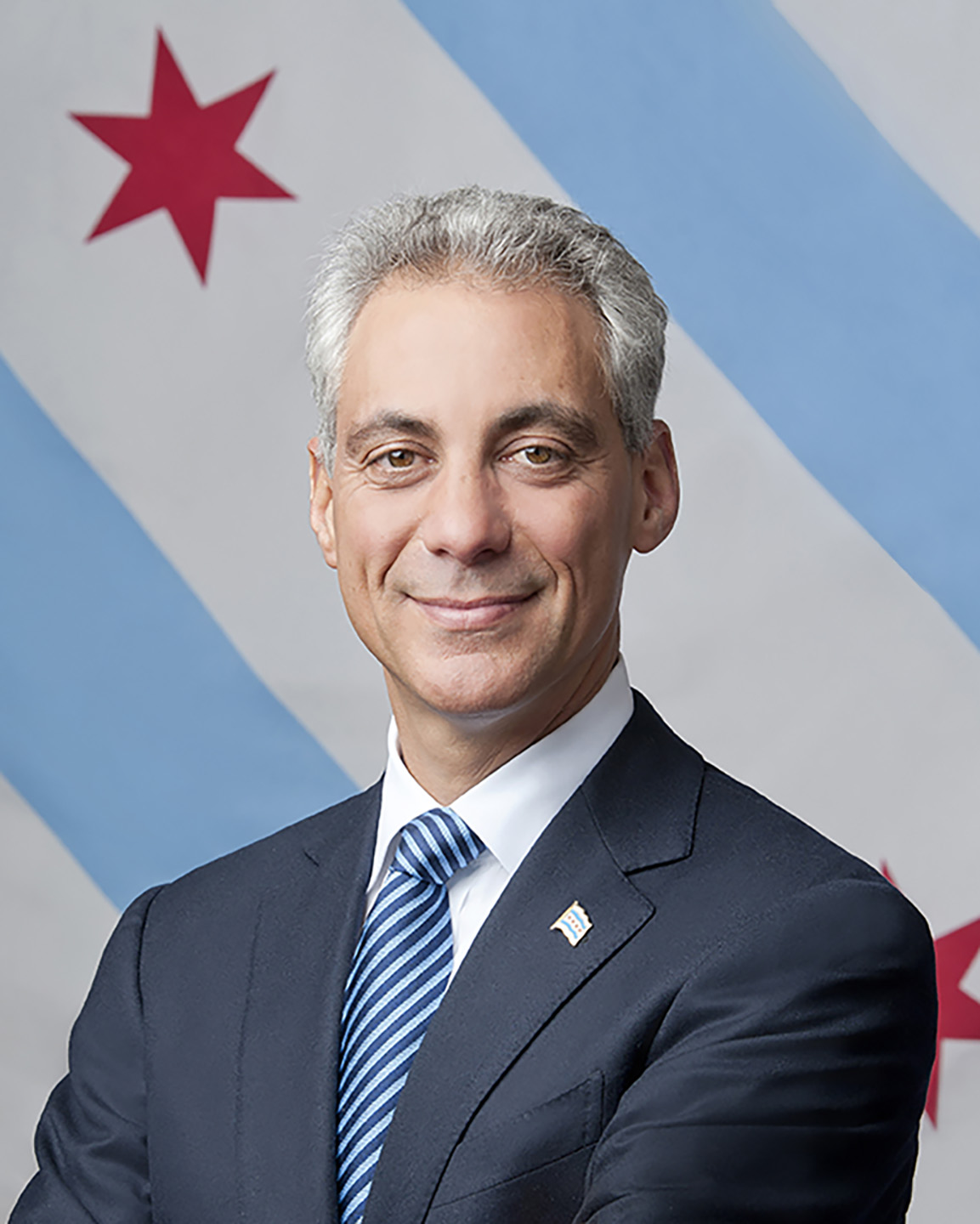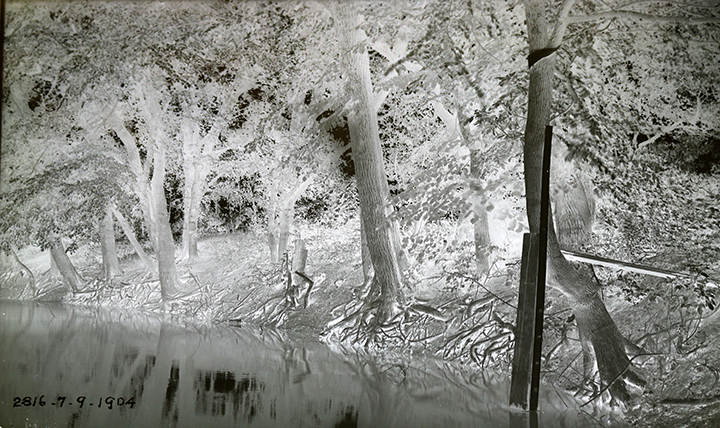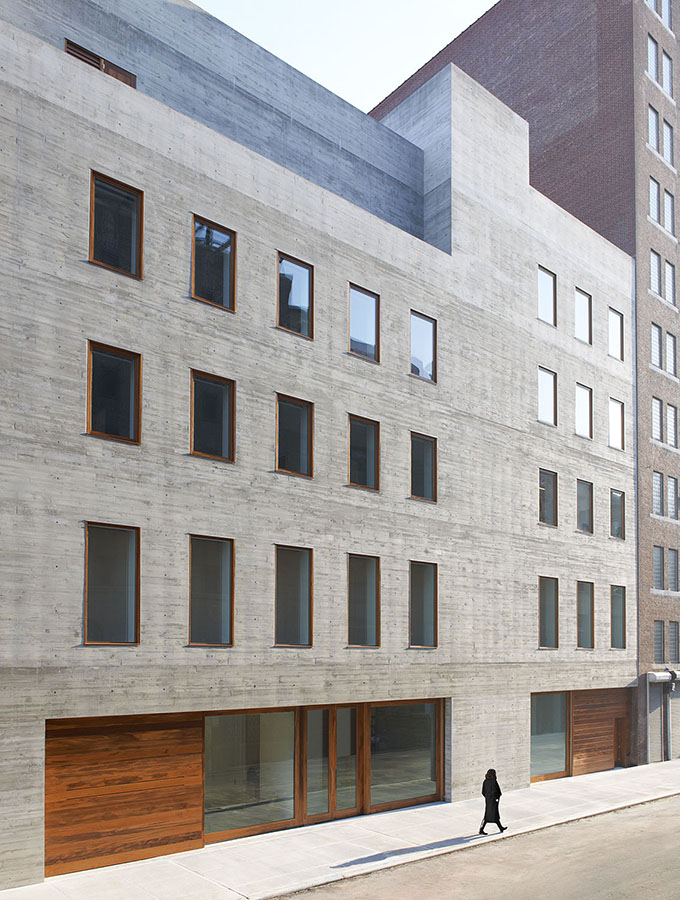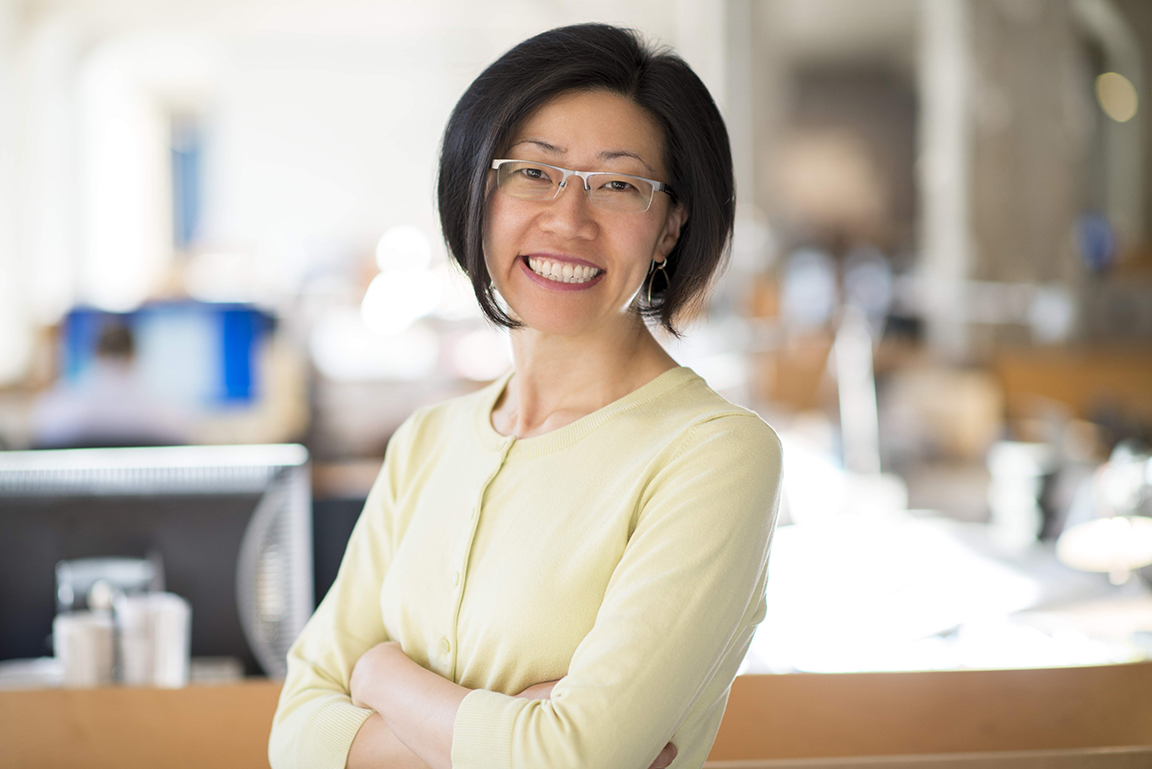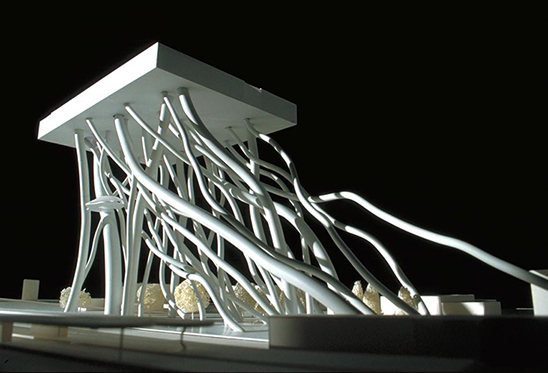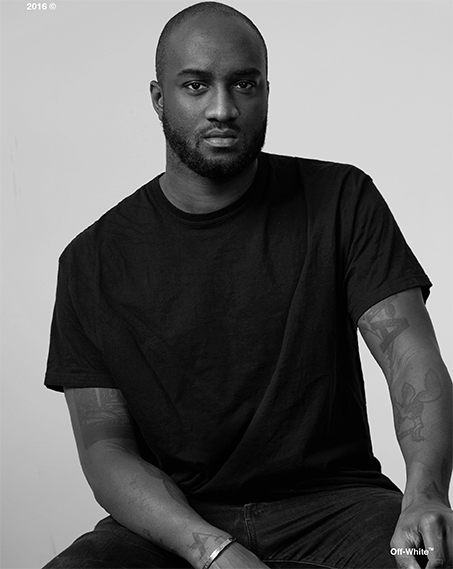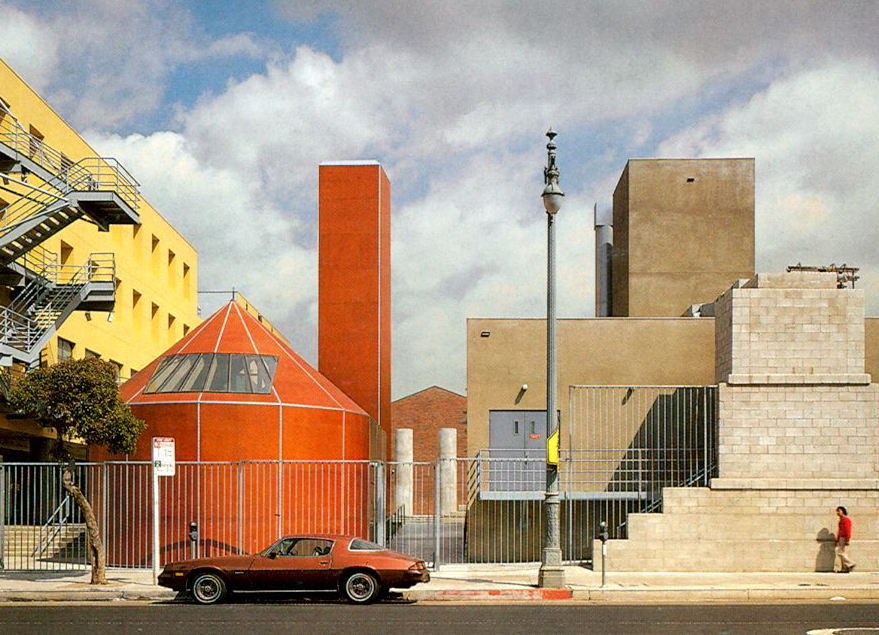Aaron Sachs, “A Common Treasury for All”: Toward a Deeper History of Environmental Justice”
In recent years, environmental justice scholarship has exploded. But virtually every relevant piece of work has understood the history of environmental justice as dating only to the late 20th century. This talk goes back to the 17th century, seeking to trace and analyze the evolution of a positive environmental rights discourse in European and American history. Having established our opposition to environmental injustice, we might want to ask: what exactly are we aiming for, in positive terms? What are the components of environmental justice? Is there any common ground left to stand on? And how might a deeper historical perspective help us answer these questions?
Aaron Sachs (AB ’92) is Professor of History and American Studies at Cornell University, where he has taught since 2004. In 2006, he published The Humboldt Current: Nineteenth-Century Exploration and the Roots of American Environmentalism (Viking), which won Honorable Mention for the Frederick Jackson Turner Award, given to the best first book in the field of U.S. history by the Organization of American Historians (OAH). In 2013, he published Arcadian America: The Death and Life of an Environmental Tradition (Yale U. Press), which was nominated for the Pulitzer Prize in general nonfiction. Sachs has also published articles in such journals as Environmental History, Rethinking History, American Quarterly, and History and Theory. In his graduate teaching, he works with students not only in History but also in English, Science and Technology Studies, History of Architecture, City and Regional Planning, Anthropology, and Natural Resources. At Cornell, Sachs is the faculty sponsor of a radical underground organization called Historians Are Writers, which brings together graduate students who believe that academic writing can be moving on a deeply human level. He is also the founder and coordinator of the Cornell Roundtable on Environmental Studies Topics (CREST). Sachs is currently at work on book projects focusing on environmental modernity; environmental justice; and environmental humor.
Mayor Rahm Emanuel
Co-sponsored by the Harvard Joint Center for Housing Studies and the Office of Communications.
Please join us for a conversation between Chicago Mayor Rahm Emanuel and Mohsen Mostafavi, Dean of the Harvard Graduate School of Design and the Alexander and Victoria Wiley Professor of Design.
Rahm Emanuel is the 55th Mayor of the City of Chicago and has served since 2011. During that time he has made the tough choices necessary to secure Chicago’s future as a global capital. The Mayor lengthened the school day and added more than 200 hours to the school year, taking Chicago from having the least educational time of any large school district in the country to being on par with its peers. He implemented full-day kindergarten for every Chicago child, and fought for and won new accountability measures to ensure that every teacher and principal had the necessary resources to succeed. The Mayor’s comprehensive public safety strategy is focused on expanded prevention programs for at-risk youth, smarter policing strategies, and empowering parents and communities to reduce violence in their neighborhoods. He attracted numerous companies to Chicago and helped to build the next generation of start-ups, while investing in the infrastructure, public transportation, open space and cultural attractions that make Chicago a great place to live, work, and play. And he has worked to make our government more effective, to deliver better services at a more competitive price, and to open government to the public.
Prior to becoming Mayor, Emanuel served as the White House Chief of Staff to President Barack Obama and served three terms in the U.S. House of Representatives representing Chicago’s 5th District. He previously served as a key member of the Clinton administration from 1993 to 1998, rising to serve as Senior Advisor to the President for Policy and Strategy.
Mayor Emanuel graduated from Sarah Lawrence College in 1981 and received a Master’s Degree in Speech and Communication from Northwestern University in 1985. He is married to Amy Rule, and they have three children.
PLEASE NOTE:
- GSD students who pre-registered to attend this event should bring a print-out of their confirmation (or have it pulled up on their phones) and their HU ID card.
- We have reached capacity for this event and registrations are now closed. If you pre-registered, please remember to bring a print-out of your confirmation (or have it pulled up on your phone) and a photo ID.
- No food or drink will be allowed into the auditorium.
Danielle Choi
Danielle Choi is an Assistant Professor of Landscape Architecture at the Harvard Graduate School of Design. She teaches in the Masters of Landscape Architecture core studio sequence and leads design research seminars.
Choi’s research concerns the role of landscape architecture in the political ecology of the built environment. At the turn of the 20th century, large-scale infrastructure and public parks in American cities co-authored multiple narratives of environmental control, crisis management, and regional boundaries. Currently, her research on these issues concerns civil waterworks, aquatic ecology and the public realm in Chicago, and the politics of contemporary landscape preservation in these living environments.
Choi is a licensed landscape architect in New York State and founder of LILAC. She was the 2016-2017 Daniel Urban Kiley Fellow in Landscape Architecture at the GSD. Prior to joining the GSD, she taught studio in urban design at Columbia University GSAPP and was a senior associate at Michael Van Valkenburgh Associates in New York City, where she led strategy and design of complex urban landscapes and managed large, multi-disciplinary teams. Choi also worked as a designer at Topotek in Berlin and SCAPE in New York City. She holds a Bachelor of Arts in art history from the University of Chicago and a Masters in Landscape Architecture from the GSD, where she received the Jacob Weidenmann graduation award for excellence in design.
Annabelle Selldorf
Please join us for a lecture by architect Annabelle Selldorf. She will discuss recent projects including a major expansion and renovation of the Museum of Contemporary Art San Diego; the transformation of former railyards into LUMA Arles, a new center for contemporary arts in southern France; and the largest recycling facility in the United States located on the Brooklyn waterfront.
Annabelle Selldorf is the Principal of Selldorf Architects, a 70-person architectural design practice that she founded in New York City in 1988. The firm creates public and private spaces that manifest a clear and modern sensibility to enduring impact. Since its inception, the firm’s guiding principles have been deeply rooted in humanism. At every scale and for every condition, Selldorf Architects designs for the individual experience. As a result, its work is brought to life, and made complete, by those who use it.
Clients include cultural institutions and universities such as Brown University, New York University, the Museum of Contemporary Art San Diego, The Clark Art Institute, Neue Galerie New York, and LUMA Arles, a new contemporary art center in Arles, France. In addition, the firm has created numerous galleries for David Zwirner, Hauser & Wirth, and Gladstone Gallery among others, and designed exhibitions for the Whitney, Frieze Masters, Gagosian Gallery, and the Venice Art Biennale. The firm has designed the largest recycling facility and education center in the United States; the Sunset Park Material Recovery Facility, which is located on the Brooklyn waterfront.
Ken Yeang, “Ecoarchitecture and Ecomasterplanning: The Work of Ken Yeang”
Please join us for a lecture by Ken Yeang. Yeang will discuss an approach to green and sustainable design based on the science of ecology. He will show how ecology and the ecosystem influence the design and planning of the built environment while offering a theoretical descriptive (non-stochastic) model for ecological design. Yeang’s work will illustrate the ideas and principles that he presents.
Ken Yeang is an architect, planner and ecologist who is best known for green architecture and masterplans that are driven by an ecology based approach and design work with a distinctive green aesthetic that performances beyond conventional rating systems. He trained at the AA School (Architectural Association) and received his doctorate from Cambridge University on ‘ecological design and planning’. His key buildings include the Great Ormond Street Children’s Hospital Extension (UK), Solaris (Singapore), National Library (Singapore), Mesiniaga Tower (Malaysia), Spire Edge Tower (India), Genome Research Building (Hong Kong), Suasana Putrajaya (Malaysia). He is principal of T. R. Hamzah & Yeang Sdn. Bhd. (Malaysia) with offices in the UK and China. He was awarded the Malaysian Institute of Architects Gold Medal, the Government of Malaysia Merdeka Award, the Architectural Society of China Liangsicheng Award 2016 and others. He holds the chair of the Distinguished Plym Professor at the University of Illinois. The UK Guardian newspaper named him as one of 50 individuals who could save the planet (2008).
Rosa Sheng, “Why Equity Matters for Everyone: A new value proposition for Design”
Fueled by the persistent and striking inequity of representation in architectural practice, where women compose only 12–18 percent of AIA members, licensed architects, and senior firm leadership, Rosa Sheng founded Equity by Design, a committee of AIASF, in 2013.
It has grown into a national call to action for both women and men to help realize the goal of equitable practice in order to retain talent, advance the profession and communicate the value of design to society. The 2016 Equity in Architecture Survey and EQxD Hackathon Workshops have sparked much needed dialogue that has resulted in 5 sold-out symposia, wide spread media coverage and requests for EQxD presentations nationally and beyond.
In her presentation, Rosa Sheng, AIA LEED AP BD+C, a Principal at SmithGroupJJR and AIASF President 2018 will introduce a provocation on “Why Equity Matters for Everyone: A new value proposition for Design”, with key anecdotes and survey findings from the 2016 Equity in Architecture Survey that will frame the discussion on how Architecture and professional practice can create new relevance, and provide meaningful engagement and better design outcomes for the communities that designers serve.
Sheng states: “Equity is the ethos of our work. It is the ability to recognize difference and provide fair and just access to opportunities. Equity also speaks to collective ownership, vested interest and knowledge of our worth. Equitable practice promotes the recruitment and retention of the most diverse talent while building stronger, successful, sustainable practices.”
The 2016 Equity in Architecture Survey was designed to generate a comprehensive national dataset detailing current positions and career experiences of architecture school graduates. With the assistance of architecture’s national collateral organizations, AIA component chapters, firms, and academic institutions, survey invitations were sent out to a broad cross-section of the profession. The resulting dataset — the largest ever collected on equity within the profession — documents the experiences of 8,664 individuals representing all 50 states and nations on six continents.
Rosa T. Sheng, AIA is a Principal at SmithGroupJJR, AIA SF President 2018, and Founding Chair for Equity by Design. She has led a variety of award-winning and internationally acclaimed projects throughout her career. Equity by Design has launched a national movement for achieving equitable practice and design in Architecture since 2013. The group’s survey and outreach for equity in architecture has received national press including Architect Magazine, Architectural Record, Wall Street Journal, The New York Times, TEDxPhiladelphia and KQED/NPR.
This event is co-sponsored by the Office of Career Services and the Office of Communications.
K. Michael Hays and Andrew Holder Exhibition Lecture: “Architecture Before Speech: A Conversation”
Please join us for a evening with K. Michael Hays, Eliot Noyes Professor of Architectural Theory, and Andrew Holder, Assistant Professor of Architecture, as they discuss their exhibition, Inscriptions: Architecture Before Speech (Druker Design Gallery, January 22 – March 11, 2018).
If recent theory has highlighted architecture’s turn to evident resemblance and signification, we argue this tendency has also produced its other: The landscape of contemporary practice is filled with work whose motivating interests are anterior to meaning and averse to thematization; they are, in a way, pre-speech. Projects in this mode are born of the original human postulate to claim a place in the world, to confirm having been there, to make and mark a difference. “Inscriptions” is a broad survey of work that problematizes, resists, and exceeds signification by appealing to other kinds of cultural engagements, agreements, and fantasies of architecture’s origins. Important projects by Harvard University Graduate School of Design faculty spanning more than 35 years of practice are interspersed as conceptual keystones among works from emerging architects across the American academy, offering a theory of the structural relationships that bind and organize even the apparent delirium of the contemporary field.
A reception for the exhibition will take place in the Druker Design Gallery immediately following the lecture.
List of Participating Practices in the Exhibition:
Ajay Manthripragada
Alex Maymind
Ania Jaworska
BairBalliet
Besler & Sons
Bittertang Farm
Bureau Spectacular
Central Standard Office of Design
Christ & Gantenbein
Collective-LOK
Curtis Roth
D.ESK
dePaor
Design with Company
Ellie Abrons
Endemic Architecture
Ensamble Studio
Erin Besler
EXTENTS
Farshid Moussavi Architecture
Farzin Farzin
Filip Tejchman
First Office
formlessfinder
FreelandBuck
Gabriel Fries-Briggs
Höweler + Yoon
Hume Coover Studio
is-office
Jesús Vassallo
Johnston Marklee
Karamuk*Kuo
Kiel Moe
Kyle Miller
LA DALLMAN
Laida Aguirre
LAMAS
Machado Silvetti
Mack Scogin Merrill Elam Architects
MALL
Medium Office
Meredith Miller and Thom Moran
Michelle JaJa Chang
MILLIØNS
Mira Henry
Mircea Eni of Small Office
MOS
NEMESTUDIO
New Affiliates
Norman Kelley
Office KGDVS
Outpost Office
PARA Project
Paul Preissner Architects
Pezo von Ellrichshausen
Preston Scott Cohen
Productora
SCHAUM/SHIEH
Sean Canty
SIFT Studio
SPORTS
STUDIO OFFSHORE
Studio PM
T+E+A+M
The LADG
The Open Workshop
Toshiko Mori Architect
Ultramoderne
Volkan Alkanoglu | DESIGN
WOJR
Young & Ayata
K. Michael Hays is Eliot Noyes Professor of Architectural Theory at the Harvard University Graduate School of Design and Associate Dean for Academic Affairs, as well as Interim Chair for the Department of Architecture. Hays joined the Faculty of Design in 1988, teaching courses in architectural history and theory. Hays has played a central role in the development of the field of architectural theory and his work is internationally known. His research and scholarship have focused on the areas of European modernism and critical theory as well as on theoretical issues in contemporary architectural practice. He has published on the work of modern architects such as Hannes Meyer, Ludwig Hilberseimer, and Mies van der Rohe, as well as on contemporary figures such as Peter Eisenman, Bernard Tschumi, and the late John Hejduk. Hays was the founder of the scholarly journal Assemblage, which was a leading forum of discussion of architectural theory in North America and Europe. From 1995 to 2005 he was Chair of the PhD Committee and Director of the GSD’s Advanced Independent Study Programs. In 2000 he was appointed the first Adjunct Curator of Architecture at the Whitney Museum of American Art, a position he held until 2009. Hays received the Bachelor of Architecture degree from the Georgia Institute of Technology in 1976. From MIT he received the Master of Architecture degree in Advanced Studies in 1979, and the Doctor of Philosophy in the History, Theory, and Criticism of Architecture and Art in 1990.
Andrew Holder is an educator, occasional author, and co-Principal of the The LADG. His research interests include the construction of architecture as an inanimate subject as well as novel methods of engaging historical precedent and the production of complex form in a post-digital discipline. Andrew’s recent work has been published in Young Architects 16, Log, Pidgin, and Project. He is a frequent lecturer and guest critic at institutions across the United States and has held teaching appointments at the University of Michigan, the University of Queensland, the University of California, Los Angeles, Sci-Arc, and Otis College of Art and design. His design work has received numerous awards including the 2014 League Prize from the Architectural League of New York, multiple citations from the American Institute of Architects Los Angeles Chapter, and the Boston Society of Architects Unbuilt Architecture award. Andrew is a Harry S. Truman Scholar, an Oberdick Fellow at the University of Michigan, and a Robert B. Pamplin Jr. Fellow at Lewis & Clark College. He received a Master of Architecture with distinction from the University of California, Los Angeles and a Bachelor of Arts in Political Science from Lewis & Clark College.
Core Studio Public Lecture: Virgil Abloh, “Insert Complicated Title Here”
Virgil Abloh (Rockford, IL 1980) is an architect, engineer, creative director, and designer. After earning a degree in Civil Engineering from the University of Wisconsin Madison, he completed a Master´s degree in Architecture at the Illinois Institute of Technology. It was here that he learned not only about design principles but also about the concept of collaborative working. He studied a curriculum devised by Mies van der Rohe on a campus van der Rohe had designed. After completing his degree, Abloh soon took on the role as a creative director for Kanye West and for West´s creative think tank “Donda“.
Throughout Virgil Abloh’s career, he has received numerous awards in the realms of art and design. Off-White c/o Virgil Abloh™ began in 2012 as an art project titled PYREX VISION. In 2013, Off-White c/o Virgil Abloh™ was introduced as a seasonal men’s and women’s fashion brand, which has grown to include the production of furniture designed by Abloh. In 2015, Off-White™ was one of eight finalists for the LVMH Prize in Paris. In 2016, he was inducted into the BOF 500 “The People Shaping The Global Fashion Industry” List. In the same year, he was one of five nominees for the category of International Urban Luxury Brand at The British Fashion Awards. In 2017, Abloh was one of five nominees for the category of Swarovski Award for Emerging Talent at The CFDA Awards. Additionally, in 2017, Abloh was selected as a special guest to show his Spring Summer 2018 Men’s OFF-WHITE c/o VIRGIL ABLOH™ Collection in Florence, Italy during Pitti Immagine Uomo 92. In 2019, Abloh’s work will be the subject of a focused retrospective at the Museum of Contemporary Art, Chicago, where he will show new work alongside previously unseen works from his past.
This event is free and open to the public. No tickets are required; guests will be asked to line up and will be seated on a first come first served basis, with priority for GSD students, faculty, and staff.
Eduard Sekler Memorial Lecture: Jorge Silvetti, “TYPE: Architecture’s elusive obsession and the rituals of an impasse”
Please join us for a lecture by Jorge S. Silvetti, Nelson Robinson, Jr. Professor of Architecture at the GSD. Mohsen Mostafavi, Dean and Alexander and Victoria Wiley Professor of Design, will give an introduction to Silvetti as well as to Eduard Sekler, Harvard University’s Osgood Hooker Professor of Visual Art Emeritus and Professor of Architecture Emeritus at the Harvard Graduate School of Design, who passed away this past spring at the age of 96. Following Silvetti’s talk he will be joined by Toshiko Mori, Robert P. Hubbard Professor in the Practice of Architecture at the GSD for a conversation on the parallels between Sekler and Silvetti’s contributions to the GSD and to the wider university.
Jorge S. Silvetti is the Nelson Robinson, Jr. Professor of Architecture at the Harvard University Graduate School of Design where he has taught since 1975. He was chairman of the Architecture Department from 1995-2002. He teaches design studios (that have included The National Archives of Argentina, A Project Along the River Bilbao La Ria de Bilbao, La Reserva Ecologia of Buenos Aires, and Cordoba) and lectures on history, contemporary theory, and criticism (Architectural History I: Buildings, Texts, and Contexts from Antiquity through the 17th Century).
Since 1986, Silvetti has directed a number of research programs, including one on the urbanism and architecture of Sicily, which won a Progressive Architecture award and made him the first designer to win in all P/A award categories. Other research programs include “Buenos Aires 2000,” on the future of public spaces in the changing Latin American metropolis, and “The ria de Bilbao,” on the future development of this formerly industrial city in northern Spain. Silvetti has written on architectural theory, and his design work has been exhibited in museums and galleries worldwide. In 1986, he was awarded the Rome Prize of the American Academy in Rome. Since 1996, he has served as a juror for the Pritzker Architectural Prize, and in 2000 he became a juror for the Mies van der Rohe Prize for Latin American Architecture. Silvetti received the Dipl Arch from the Universidad de Buenos Aires and the MArch from the University of California at Berkeley.
His architecture firm, Machado and Silvetti Associates, was founded in 1974 and has received numerous honors for design projects, including three awards from the American Institute of Architects, nine Progressive Architecture awards and citations, seven Boston Society of Architects awards, and eight design awards from the New England AIA chapter. In 1991, the firm was given the First Award in Architecture by the American Academy of Arts and Letters. The firm’s notable projects include work at Princeton University, Harvard University, Rice University, Arizona State University, the University of Arkansas, the University of Utah, the American University of Beirut, as well as a public library branch in Boston, a private development in Boston, and a new center of comparative archaeology at the Getty Villa in Malibu, California.
Eduard Franz Sekler, Harvard University’s Osgood Hooker Professor of Visual Art Emeritus and Professor of Architecture Emeritus at the Harvard Graduate School of Design, passed away last week at the age of 96. An architect and historian of architecture, Professor Sekler first came to Harvard in 1953, as a Fulbright Scholar. Two years later, Graduate School of Design Dean Josep Lluis Sert invited him to join the GSD faculty. From 1966 to 1976, he served as the first director of the Carpenter Center. He co-founded Harvard’s Visual and Environmental Studies (VES) department in 1968, alongside the late Albert Szabo. All told, Professor Sekler served on the Harvard University faculty for over 50 years.
A native of Vienna, Professor Sekler received professional training in architecture at the Vienna University of Technology before moving to London to study under Rudolf Wittkower at the School of Planning and Regional Research. He graduated with a PhD in the history of art from London University’s Warburg Institute in 1948, and came to the United States as a Fulbright Fellow in 1953. Among his many contributions to Harvard, Professor Sekler co-founded the University’s Visual and Environmental Studies department in 1968.
A prolific writer, Professor Sekler authored, among other publications, Wren and His Place in European Architecture (1956); Research and Criticism in Architecture (1957); and co-authored with William Curtis Le Corbusier at Work: The Genesis of the Carpenter Center for the Visual Arts (1978). He was the recipient of numerous grants and awards throughout his career, including a Guggenheim Fellowship for the morphological study of selected historic urban spaces in Europe and Asia.
In addition to his academic pursuits, Professor Sekler was a passionate advocate for the preservation of cultural and architectural sites around the world, and worked with UNESCO on a number of projects. He was particularly dedicated to the conservation of Nepal’s Kathmandu Valley after first visiting the region in 1962. Ten years later he led the international UNESCO team for the “Masterplan for the Preservation of the Cultural Heritage of the Kathmandu Valley,” and in 1991 he founded the Kathmandu Valley Preservation Trust (KVPT), an organization dedicated to safeguarding the built heritage of the region.
Toshiko Mori is the Robert P. Hubbard Professor in the Practice of Architecture at Harvard University Graduate School of Design and was chair of the Department of Architecture from 2002 to 2008. She is principal of Toshiko Mori Architect, which she established in 1981 in New York City. Mori taught at the Cooper Union School of Architecture from 1983, until joining the Harvard GSD faculty with tenure in 1995. She has been a visiting faculty member at Columbia University and Yale University, where she was the Eero Saarinen Visiting Professor in 1992. Mori has taught courses on the tectonics of textiles, materials and fabrication methods in architecture, structural innovations, and the role of architects as agents of change in a global context. Her recent studio classes have partnered with international non-profits to develop community center and performing arts center prototypes.
Toshiko Mori Architect’s current work includes public New York City theater and library projects, a park visitor center in the Bronx, the Hudson Yard Park and Boulevard, and subway canopies. Mori designed institutional projects for Brown University and Syracuse University, and is part of the design team for New York University’s masterplan. She also designed the award winning Visitor Center at Frank Lloyd Wright’s Darwin D. Martin House compound in Buffalo, NY, as well as the Center of Excellence in Environmental and Energy Systems for Syracuse University. Residential projects include work in Maine, Massachusetts, New York, Mongolia and Taiwan.
Mori’s strong research-based approach to design has been commended in invitations to lectures and conferences around the world. As a member and former-chair of the World Economic Forum’s Global Agenda Council on Design, Mori has participated in sessions to discuss scarcity-driven design, the future of cities and urban information systems, design related to olfactory sensation and experience, and the role of the arts in improving communities. She has participated in international symposia and conferences, including panels held at the MoMA, Guggenheim Museum, and the G1 Summit in Japan. In 2010, Mori was selected to speak at the annual Women of Architecture lecture series at the National Building Museum. She has lectured at universities across the country and around the world.
Mori has received numerous awards and her work has been widely exhibited and published. In 2003 Mori was awarded the Cooper Union Inaugural John Hejduk Award. In 2005, she received the Academy Award in Architecture from the American Academy of Arts and Letters, and the Medal of Honor from the AIA New York Chapter. Her work was exhibited in the Cooper-Hewitt National Design Museum’s “Design Life Now: National Design Triennial 2006” and at the Guggenheim Museum. She has contributed to various publications, and edited a volume on material and fabrication research, Immaterial/Ultramaterial. A monograph of her work, Toshiko Mori Architect, was published by Monacelli Press.
In 2009, she established a think tank, VisionArc, which connects local and global issues to mobilize design initiatives for a more sustainable future. Mori presented this research at the Singapore Icsid World Design Conference and the Bilbao Bizkaia B Award Design Festival. The research aims to locate new opportunities to embed design into higher channels and broader fields of practice.
Patricia Urquiola, Margaret McCurry Lectureship in the Design Arts
Patricia Urquiola studied architecture and design at Madrid Polytechnic and Milan Polytechnic, graduating with Achille Castiglioni. She worked with Vico Magistretti and later as head of design at Lissoni Associati. She has received the Gold Medal of the Arts and the Order of Isabel the Catholic by His Majesty The King of Spain Juan Carlos I. Her work is displayed in various museums and collections, such as MoMA in New York, Musée des Arts Decoratifs in Paris, the Museum of Design in Munich, the Vitra Design Museum in Basel, the Design Museum in London, the Victoria & Albert Museum in London, the Stedelijk in Amsterdam and the Triennale Museum in Milan. She is the Art Director for Cassina.
Urquiola’s lecture is the evening keynote for the Fall 2017 Admissions Open House. Funding for Urquiola’s lecture is provided by the Margaret McCurry Lectureship in the Design Arts.
